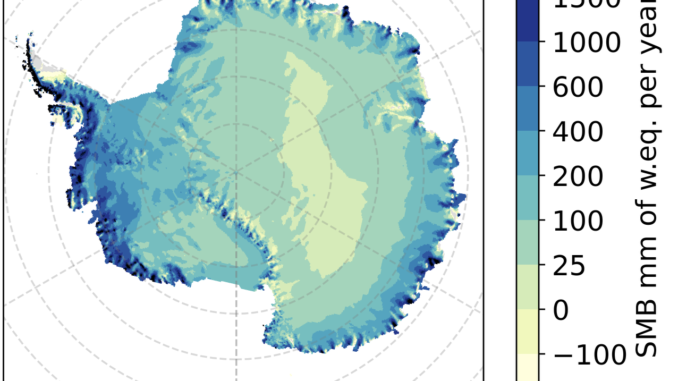
The article “Downscaled surface mass balance in Antarctica: impacts of subsurface processes and large-scale atmospheric circulation” is published in the Cryosphere.
Here are the main results:
- This study modelled the Antarctic surface mass balance (SMB) from 1980 to 2017, by using the regional climate model HIRHAM5 to force three slightly different setups of an offline subsurface model, the three simulations are called Fixed, Dyn03 and Dyn15.
- The SMB from the three model setups mostly differs over the ice shelves. The mean SMB is seen in subfigure (a); over most of the continent we see a positive SMB, but over the Larsen ice shelf we model a negative SMB. Subfigure (b) shows the difference over West Antarctica.
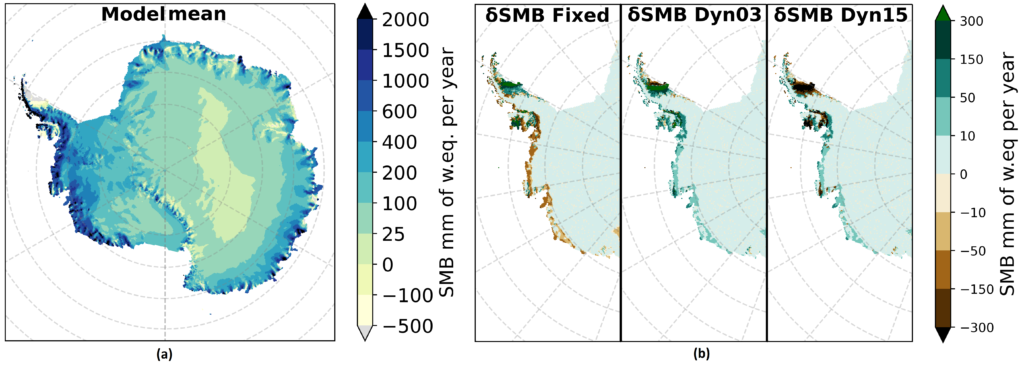
- To evaluate the modelled SMB we compared it with the SumUp dataset. Subfigure (a) shows the measured annual SMB from the SumUp dataset, (b) shows the delta SMB (SumUp – model mean) and (c) the difference in percentage. In large parts of Antarctica, our model is reliable.
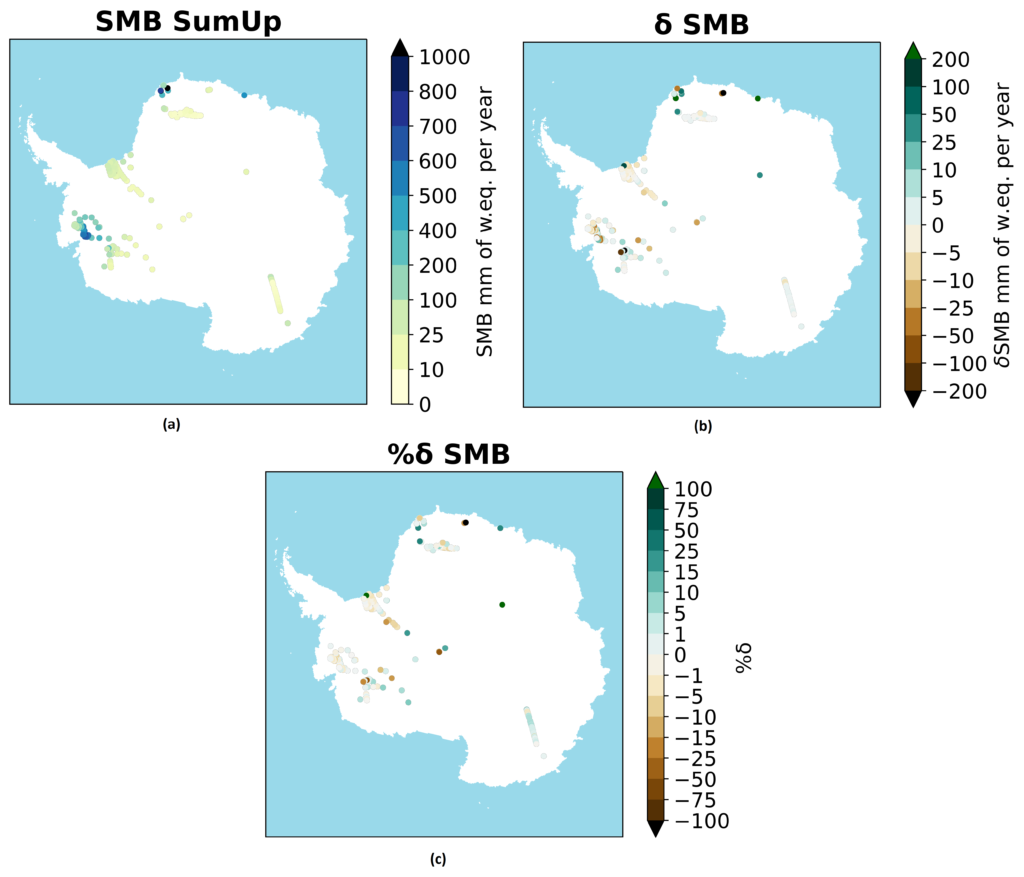
- For further evaluation, mass balance (MB) estimates were made, using our modelled SMB anddischarge values from two different datasets These MB estimates were compared with the gravimetric MB from GRACE. The modelled estimate is very sensitive to the choice of discharge dataset.
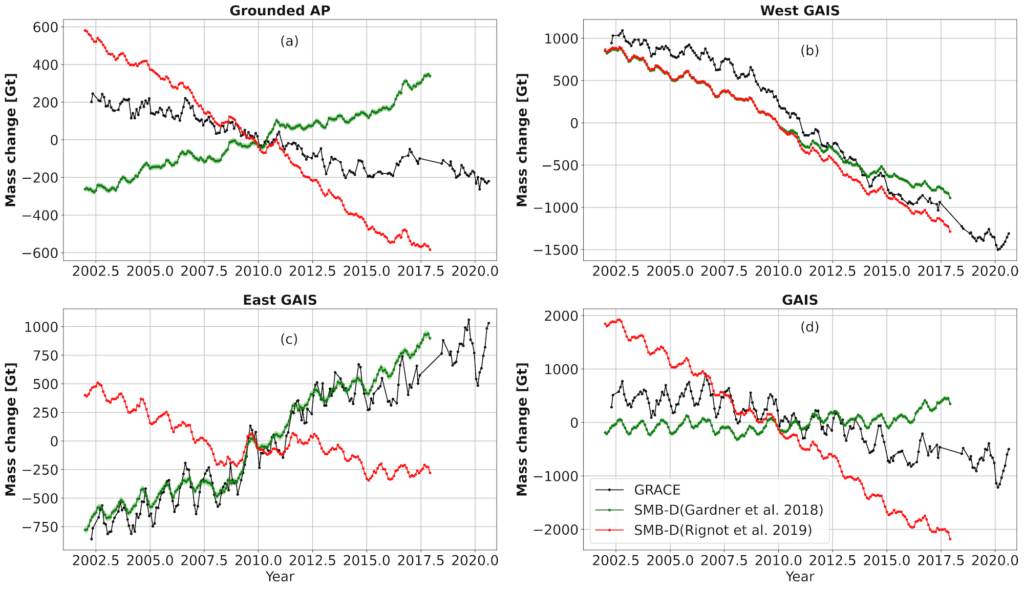
- Finally, we investigated the relationship between the phase of the Southern Annular Mode (SAM) and the spatial distribution of the SMB on basin scale. We found a robust relationship between the SAM and the SMB in 13 out of 27 basins.
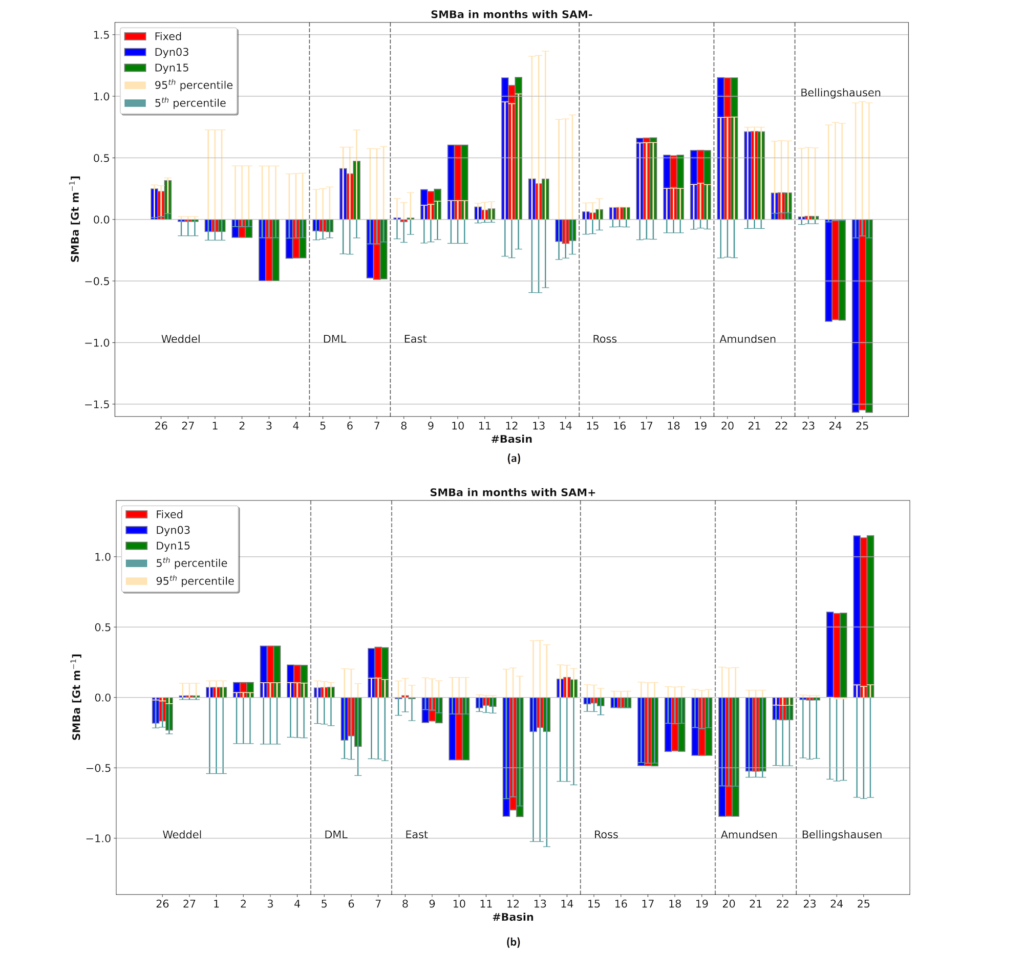

Leave a Reply